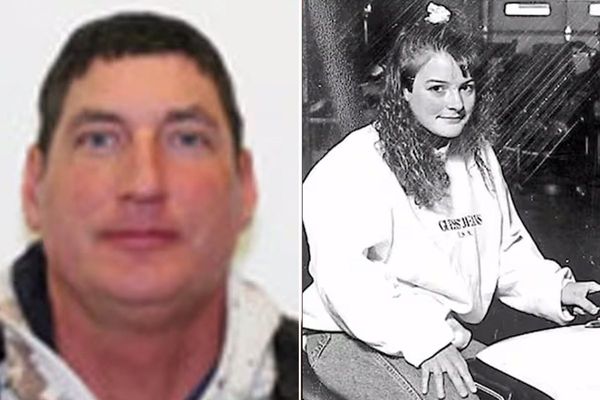Breathing deeply and stretching into yoga poses is not the type of training you would expect from a bull rider.
But in this punishing sport, Kurt Shephard says most professional bull riders like him incorporate yoga, pilates, and stretching into their workouts.
Flexibility is vital when sitting on top of an 800-kilogram bucking bull and trying to hold on for eight seconds.
Bulls used in the sport today are much stronger, with imported US genetics mixed with Australian genes, so bull riders need to train harder and smarter to keep up with the beasts.
Gone are the days when bull riders were just cowboys looking for a ride on the weekend rodeo circuit. The industry has changed, breeding a new calibre of riders as well as bulls.
Mindfulness to ground, calm bull riders
As well as yoga and pilates there is a huge focus on mental fitness too, with many bull riders practicing visualisation and breathing techniques to help them focus while they are in the chutes before a ride.
"The key is to be able to clear your mind when you are sitting on the back of a bull. If you can't, you may as well not ride one," Shephard said.
"You have to forget about everything else and just focus on your breathing."
At just 19 years of age, Qynn Andersen is also on the Professional Bull Riding (PBR) circuit and he agrees — being in the right headspace is just as important as actually riding a bull.
"I read a lot of peak performance and positive mental attitude books because your mind needs to focus," Andersen said.
"You don't do well in bull riding if you don't have a good head on you."
Former professional bull rider and now a dedicated trainer for bull riders and athletes, Will Watson, says learning ways to relax your mind and calm your nerves is vital.
"If you're getting on the back of a heavy bull with big horns it can be quite intimidating. Often riders experience nerves and anxiety, and when they're stressed they just tense up," Watson said.
"What separates the elite riders from the average riders is the mental side and knowing how to get into the right headspace."
Riders train on mechanical bulls and bareback horses
Watson started training other bull riders in 2014 and still helps them with programs focused on weights, cardio, mobility, balance, and flexibility.
"Weight training is important but we don't want them getting too big or too heavy because that can impact their performance," he said.
"And most of the guys in the PBR also have a mechanical bull, either a powered drop barrel or a Buckrite, to practice their technique without the risk of getting on a live bull and injuring themselves."
The drop barrel actually stimulates the bucking motion of a bull when it rears up at the front and kicks up at the back and riders can practice at home.
Qynn Andersen said there were many benefits to using the drop barrel.
"I find riding it helps me slow things down so the muscle memory I'm building means when I get on a bull I can focus purely on my breathing," he said.
"And I go horse riding bareback to help with my balance, which I find also builds my groin strength."
Riders need to keep up with the bulls
Will Watson said the sport had changed dramatically from the days when bull riders would turn up on a weekend and ride a bull then head down to the pub for a few beers.
"The bull breeding programs today mean the bulls are so much better and the riders have had to outsource different training methods to be able to keep up," Watson said.
"You might not have coaches pushing you, like in team sports, but there are plenty of resources out there. If riders don't train hard they'll be left behind."
PBR managing director Glen Young said genetics had completely changed the industry.
"They've brought genetics over from the United States and mixed it with the Australian genetics to produce a high quality, high calibre animal," Mr Young said.
"The bulls are so much better quality and more consistent.
"Years ago there would be 10 out of 40 bulls you could win on. Now riders can win on all 40 bulls, they're that good."
The prize money is also more attractive, especially if riders qualify for a US tour.
In America, there are multiple tours per year and huge sponsorships, meaning bigger prize money.
Bull riders from around the world work hard to qualify by earning as many world points as they can every time they compete, with the goal of making it onto the US circuit.
Last year's PBR Australia winner took home around $83,000 for the season, while the world champion in the US PBR took home over a million dollars.
"Knowing they give away around $100,000 in prize money at most events on the PBR circuit in the US, it's a huge incentive for riders here to want to compete over there," Mr Young said.
Riding a big strong bull is an adrenaline rush, Shephard said, and bull riders need to be in peak condition.
"Just like any sport, you need to be fit both mentally and physically, and the amount of training you do depends on whether you want to treat it as a professional sport or just do it for fun," he said.
"It's important for riders to do anything they can to get the edge leading into a competition, whether it be yoga or visualisation, especially with the PBR season kicking off this month."







